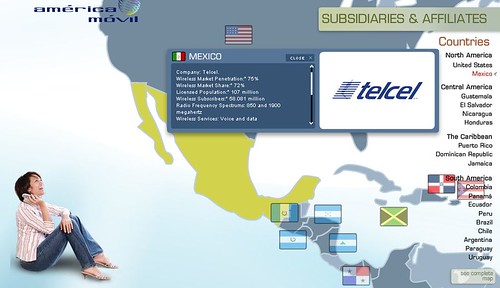China Wi-Max Communications, today announced that one of its wholly-owned foreign entity companies has “lit” its fiber ring in Beijing with full commercial operation is expected to begin in Beijing during the first quarter of 2010. The Company plans to expand into ten of the largest cities in China. In each city, China Wi-Max will purchase and deliver a fiber optic network with a wireless overlay in the most attractive areas to connect bandwidth-hungry business customers.
China Wi-Max has ten initial target markets (Beijing, Hangzhou, Shanghai, Tianjin, Shenzhen, Dalian, Qingdao, Guangzhou, Xi’an, and Chongqing), which represent approximately eight percent of the population of China, or 100 million people.
Through local Chinese partners, China Wi-Max will use large blocks of 5.8GHz wireless spectrum in Beijing, Shanghai and Hangzhou. With a wireless receiver on top of a customer’s building, and within range of a corresponding wireless receiver on the Company’s network, China Wi-Max will be able to provide broadband connections to buildings within 10 miles of its actual fiber.
The Company is headquartered in Denver, Colorado. It was formed to take advantage of the rapidly expanding wireless and landline communications needs in China.
Meanwhile, Huawei has announced the deployment of the world’s first TD-LTE/SAE trial network for China Mobile. This new network reportedly has a download speed of up to 29Mb/s and will be used for 2010 Shanghai World Expo.
China Mobile has committed to TD-SCDMA, which is similar to CDMA but uses only one channel and Time Division. TD-LTE, like TD-SCDMA uses time division, but will use the LTE protocol. It’s similar to plain vanilla WiMAX.
China has decided to allocate spectrum for 3G while essentially ignoring WiMAX, says Wimax.com. They limit WiMax to the fixed 3.5GHz flavor. China’s refusal to release 2.3GH, 2.5GHz or more 3.5GHz spectrum for BWA and WiMAX differs from the situation in the other (BRIC) countries, Brazil, Russia and India, where lobbyists from the 2 opposing camps of 3G and WiMAX have repeatedly delayed services.
Mexican communications firm MVS Comunicaciones has reached a preliminary agreement with Clearwire and Intel to invest $700 million in a WiMAX network covering 23 cities, reports Bloomberg.
 The joint-venture deal hinges on the Communications and Transportation Ministry renewing the company’s spectrum licenses in the 2.5GHz band in about eight cities, including the key markets of Monterrey and Guadalajara, according to company officials. Telecom analyst Andres Coello said he expects the authorities to renew the frequencies given MVS’s commitment to rolling out its network.
The joint-venture deal hinges on the Communications and Transportation Ministry renewing the company’s spectrum licenses in the 2.5GHz band in about eight cities, including the key markets of Monterrey and Guadalajara, according to company officials. Telecom analyst Andres Coello said he expects the authorities to renew the frequencies given MVS’s commitment to rolling out its network.
Clearwire is a minority shareholder in MVS, and their announcement is independent their plans to cover up to 120 million people in the U.S. by the end of next year.
If the licenses are renewed, MVS and its partners hope to start deploying a WiMax network during the second half of 2010, with commercial service starting in several cities during the fourth quarter. MVS currently provides publishing, radio, restricted television and wireless broadband services. It’s also the majority partner in Dish Mexico, a satellite-TV venture with EchoStar.
MVS would slug it out with Telmex, a telecommunications conglomerate headed by Carlos Slim which provides telecommunication products and services in Mexico, Argentina, Brazil (Embratel) and other countries in Latin America. Telcel, the country’s No. 1 mobile operator and a subsidiary of wireless giant America Movil, has also invested heavily to upgrade its network in recent years to offer high-speed data services.
The MVS WiMAX network would also put greater pressure on small phone companies such as Axtel, which is rolling out its own WiMax network.
MVS’s broadband ambitions would be a direct challenge to fixed-line incumbent Telmex (Telefonos de Mexico), the country’s biggest Internet service provider with 6.3 million broadband accounts at the end of September. There are currently 77.8 million mobile phone users in Mexico (pdf).
















No comments:
Post a Comment